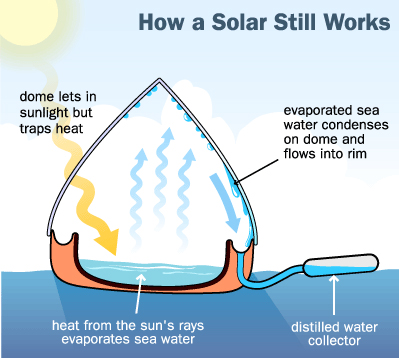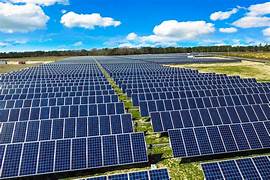Solar Still
What Is a Solar Still?
A solar still is a time-tested method to generate potable water. A solar still is a green energy product that uses the natural energy of the sun to purify water. The solar-still process uses the sun instead of other sources such as fossil fuels to gain the energy needed for purification. Solar stills are then able to supply pure water for drinking and cooking, even in areas where there are no other sources of energy, while still being friendly to the environment.
Solar stills are used in cases where rain, piped, or well water is impractical, such as in remote homes or during power outages.

Principles
A solar still will provide you with 100% pure water, and will not require purification or boiling prior to drinking.
A solar still works on two scientific principles: evaporation and condensation. First, the water that needs to be purified is placed in the trough with the black bottom. The solar still is then allowed to sit in the sun, which allows the still to absorb the sun’s short-wave energy. As the energy is absorbed, it starts to heat the water. As the temperature of the water rises, the liquid H20 is converted into steam and evaporates towards the glass ceiling, leaving anything that is not pure H20 in the trough below.
Solar stills are occasionally used on a longer-term basis in developing world settings. However, depending on environmental conditions, they usually produce a relatively small amount of water, and even less where the source is saline or brackish. If the source is inadequate, a compromise method is to mix the distilled water with the brackish or saline water purified with other methods — this gives a more adequate quantity and re-introduces the other source contaminants, while still lowering the salinity, and improving the taste. The Water Pyramid is a larger version, which uses an inflatable dome as the condensing surface and can be used in rural areas in the tropics.

